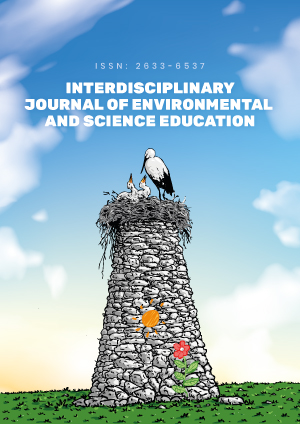Abstract
In the next decade, urban sprawl might reach such a magnitude that several natural areas surrounding cities will give way to buildings and residential areas. Although some long-term efforts to understanding wildlife dynamics in cities are under way, very little has been done in understanding the influence of urban expansion on wildlife and developing a management strategies aimed at diminishing these impacts. There is a need to study urban biodiversity and include ecological knowledge in urban planning. However, this study was focused on assessing the environmental influence on the social activity of birds in Buea university campus. The data was collected on check-sheets for a period of 2 months, 6 days a week, from 7:00am – 6:00pm. The spot-count data collection method used witnessed 616 bird observations during the study. Simultaneously, data was collected on environmental condition, day-period, bird species, bird location, and bird number. The results of this study showed a significant link between bird activity and bird species, χ2 = 171.953 df=48 P=0.000. Similarly, activity of birds showed association on bird number, χ2 = 120.254 df=40 P=0.000. The environmental conditions associated significantly with bird number, χ2 = 35.669 df=30, P<0.05. Also, bird species associated significantly with the day-period, χ2 = 171.953 df=48, P=0.000. Additionally, environmental conditions associated with bird location, χ2 = 7.921 df=6 P<0.05. Moreover, the environmental condition associated significantly with bird activity, χ2 = 28.925 df=12 P=0.004.
All the bird species observed during the survey displayed a significant activity state, however, species such as village weaver (Ploceus cucullatus), little weaver (Ploceus luteolus), and black-headed weaver (Ploceus melanocephalus), recorded 17.86%, 11.36%, and 7.31% respectively, and were observed with a higher activity frequency as compared to other bird species. The environmental role on wildlife species such as birds significantly determines their geographical distribution and endemism on the earth planet.
License
This is an open access article distributed under the Creative Commons Attribution License which permits unrestricted use, distribution, and reproduction in any medium, provided the original work is properly cited.
Article Type: Research Article
INTERDISCIP J ENV SCI ED, Volume 16, Issue 2, 2020, Article No: e2210
https://doi.org/10.29333/ijese/6446
Publication date: 08 Jan 2020
Article Views: 4225
Article Downloads: 3609
Open Access References How to cite this article
 Full Text (PDF)
Full Text (PDF)